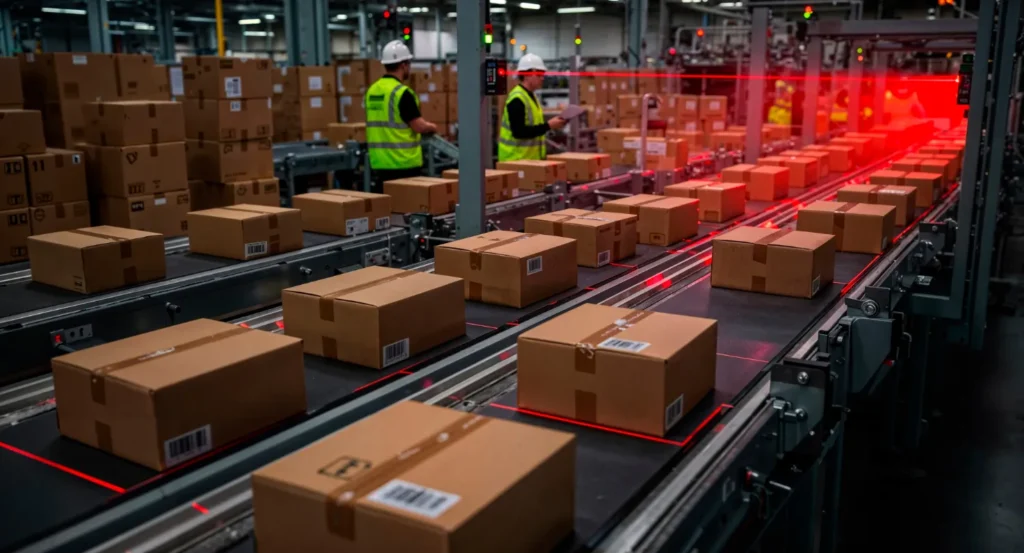You’ve probably noticed it already. Warehouses are changing. Machines are moving faster. Data is running the show. And your team? They’re expected to keep up. It’s exciting. A little stressful. Maybe even confusing. Automation does more than alter the tools you use; it transforms how everyone works together.
While all these new systems may seem exciting, your team still must know how to operate efficiently. Something as small as using an electric forklift battery could make an immediate, impactful statement: decreased downtime, smoother shifts and staying ahead of problems instead.
Understanding Automation in Logistics
Automation isn’t a future concept. It’s now. Robots picking orders. Conveyor belts that never stop. Smart sensors keep track of inventory.
The benefits? Huge. Fewer mistakes. Faster movement. More predictable outcomes.
But here’s the thing—machines don’t replace humans. They shift your role. Your staff still makes decisions. They solve problems. They keep the workflow moving when something goes wrong.
The key? Your team needs to see automation as a helper, not a threat. And that mindset starts at the very beginning. Take time to explain why certain machines are used, how they improve efficiency, and where humans still play the most important role. It makes a difference. People adjust faster when they understand the “why” behind the change.
Training Your Team for New Technology
Training isn’t just a “here’s how you push buttons” session. It’s more than that.
Your staff needs to understand hybrid workflows. Where machines handle repetitive tasks, but humans guide the process. Digital literacy matters. Safety matters. And knowing when equipment isn’t performing? Critical.
It’s also about confidence. You want your team to feel capable, not intimidated. To see new systems and think, “I’ve got this.” Small tools, upgraded equipment—even battery improvements—can make their daily work smoother.
Don’t forget to practice. Let staff spend time on machines in a controlled setting. Allow questions. Encourage trial and error. It’s a lot less stressful to learn in a low-stakes environment than in the middle of rush hour at the warehouse.
Maintaining Equipment for Maximum Efficiency
Technology only works if it’s cared for.
Forklifts, sensors, conveyors—they all need attention. Regular checks, proper charging, and routine maintenance keep things reliable. And yes, the batteries matter. Upgrading to an electric forklift battery might sound small, but it changes the daily rhythm. Fewer interruptions. Longer shifts without charging. Less guessing about when a tool will fail.
When equipment is predictable, your team can focus on actual work. Not firefighting. Not troubleshooting every hour. And that reliability? It feels good. People actually enjoy their day more when they aren’t constantly worrying about what might break next.
Even small habits make a difference. Encourage staff to report issues early. Keep checklists visible. Celebrate when maintenance is done correctly. These small steps add up.
Building a Culture That Embraces Change
Even the best tools fail without the right culture.
Your team adapts faster when change is expected and encouraged. Communication is key. Make learning new systems a normal part of work. Celebrate wins when someone masters a process or uses a machine efficiently.
When employees feel included, resistance drops. Tools stop being “new and scary” and become part of the daily routine. Your team doesn’t just survive automation—they thrive in it.
And culture isn’t just about morale. It’s about creating a space where people can share ideas. Maybe someone notices a better way to use a forklift or a new workflow that saves time. That input is invaluable. Encourage it. Reward it.
Planning for Long-Term Automation Success
Think ahead. Don’t just react to technology—anticipate it.
Map out training schedules. Update equipment plans. Look at industry trends. Plan how new systems integrate with your current workflow.
Include your team in conversations. Their feedback matters. And when you talk about long-term improvements, tools like electric forklift battery options can be mentioned naturally. Not as a pitch. Just as part of smarter, more efficient operations.
It’s also worth reviewing past workflows periodically. Ask: What worked? What didn’t? Even small tweaks can have huge effects when applied consistently. Planning isn’t a one-time task—it’s ongoing.
Conclusion
Automation is reshaping warehouses. But humans remain at the center. Your logistics team needs training, support, and reliable tools. They need to feel confident. They need to see the value in new systems. Balance is everything. Machines handle repetitive tasks. Humans guide the process. Together, they create a smarter workflow.

